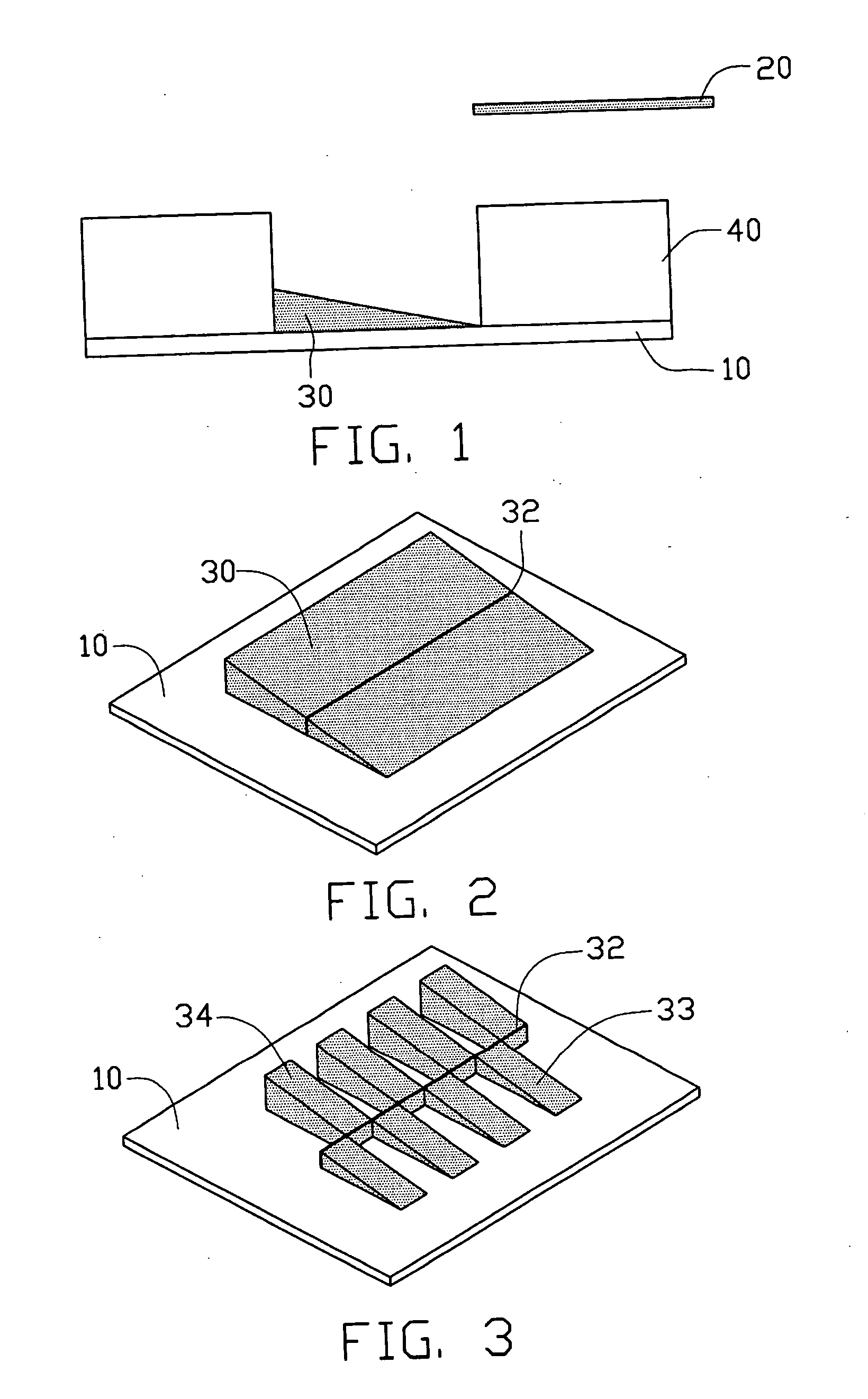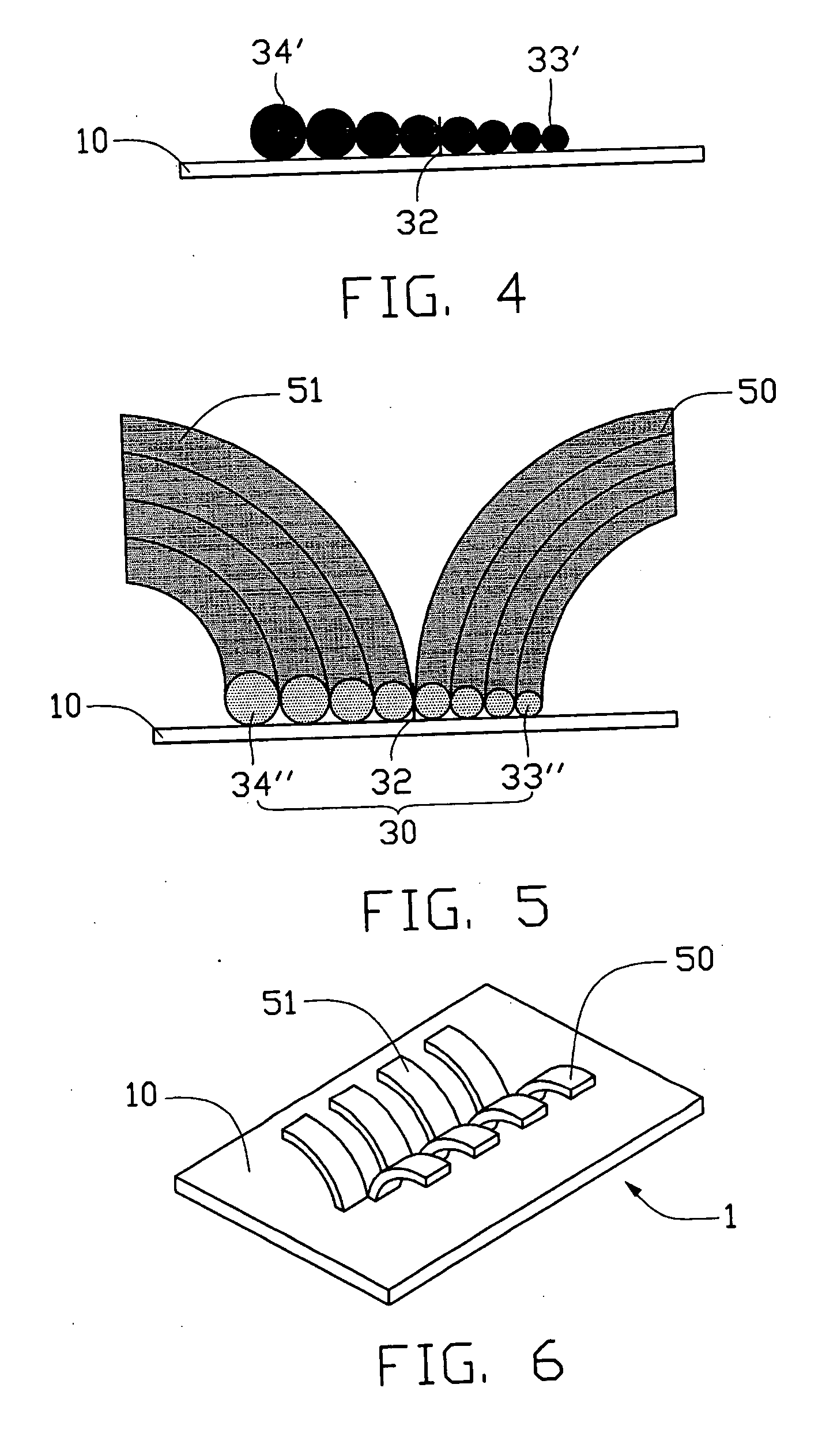Carbon nanotube-based device and method for making the same
a carbon nanotube and device technology, applied in the direction of carbonsing rags, aligned nanotubes, transportation and packaging, etc., can solve the problems of limited range of different kinds of carbon nanotube-based devices, difficult to apply the method of controlling the growth direction of carbon nanotubes in generating localized complex structures, etc., to achieve the effect of slowing down the growth of carbon nanotubes
- Summary
- Abstract
- Description
- Claims
- Application Information
AI Technical Summary
Benefits of technology
Problems solved by technology
Method used
Image
Examples
first embodiment
[0028] Referring to FIGS. 3 to 6, a preferred carbon nanotube-based device 1 according to the present invention includes a substrate 10, a catalyst layer 30 formed on the substrate 10, and a plurality of carbon nanotube arrays 50, 51 extending from the catalyst layer 30. The substrate 10 is generally made of a material selected from silicon, glass, or metal. The catalyst layer 30 includes material selected from the group consisting of iron, cobalt, nickel, and any suitable alloy thereof. The catalyst layer 30 includes a plurality of catalyst blocks 33, 34. A thickness of each of the catalyst blocks 33, 34 are gradually increases from a first end thereof to an opposite second end thereof. The catalyst blocks 33, 34 each have a region 32 with a thickness approximately equal to an optimum thickness for growing carbon nanotubes. The carbon nanotube arrays 50, 51 are arc-shaped, and bend in respective directions deviating from the region of optimum thickness 32. The carbon nanotubes in t...
second embodiment
[0029] Referring to FIGS. 10 to 14, a carbon nanotube-based device 2 according to the present invention includes a substrate 70, a catalyst layer 90 formed on the substrate 70, and a plurality of carbon nanotubes arrays 100, 101, 102, 103 extending from the catalyst layer 90. The catalyst layer 90 includes a plurality of catalyst blocks 93, 94, 95, 96. A thickness of each of the catalyst blocks 93, 94, 95, 96 gradually increases from a first end thereof to an opposite second end thereof. The catalyst blocks 93, 94, 95, 96 each have a region 92 with a thickness approximately equal to an optimum thickness for growing carbon nanotubes. The carbon nanotube arrays 100, 101, 102, 103 are arc shaped, and bend in respective directions deviating from the region of optimum thickness 92. The carbon nanotubes in the arrays 100, 101, 102,103 are bundled with each other.
[0030] A preferred method for making the carbon nanotube-based device 1 will be described below with reference to FIGS. 1 to 6. ...
PUM
| Property | Measurement | Unit |
|---|---|---|
| thickness | aaaaa | aaaaa |
| thickness | aaaaa | aaaaa |
| diameters | aaaaa | aaaaa |
Abstract
Description
Claims
Application Information
 Login to View More
Login to View More - R&D
- Intellectual Property
- Life Sciences
- Materials
- Tech Scout
- Unparalleled Data Quality
- Higher Quality Content
- 60% Fewer Hallucinations
Browse by: Latest US Patents, China's latest patents, Technical Efficacy Thesaurus, Application Domain, Technology Topic, Popular Technical Reports.
© 2025 PatSnap. All rights reserved.Legal|Privacy policy|Modern Slavery Act Transparency Statement|Sitemap|About US| Contact US: help@patsnap.com



